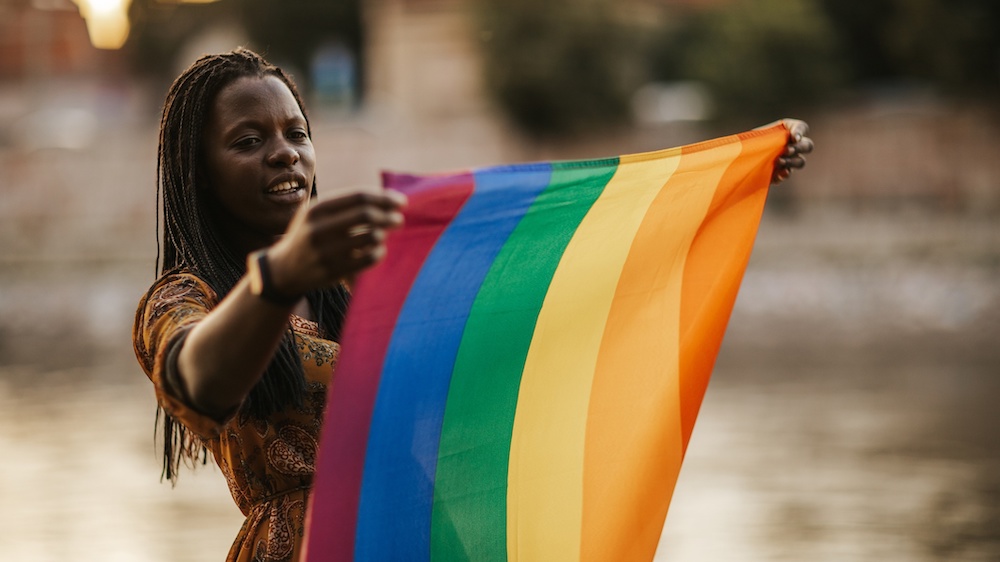If you’re interested in sharing your opinion on any cultural, political or personal topic, create an account here and check out our how-to post to learn more.
____
Close your eyes and picture for a moment an LGBTQ+ identifying person. What comes to mind? What does this person look like? How do they dress? What characteristics, traits and identities do you associate with them? For many people, maybe a white gay man would come to mind; this makes sense — this demographic is particularly visible. From LGBTQ+ events, to Pride, and representation in media, white gay men seem to dominate LGBTQ+ spaces. However, the visibility of this group leaves others in the shadows. One such group is Asexual Black women.
Asexuality is a “sexual orientation where a person experiences little to no sexual attraction to anyone” according to acesandaros.org. For Black Asexual women, the struggles associated with being a sexual minority are compounded by race and gender, an experience termed “triple jeopardy.” In a 2015 study, Calabrese and colleagues found that Black sexual minority women reported greater levels of discriminations, depression and poorer social well-being compared to both white sexual minority women and Black sexual minority men. This study demonstrates that the interaction between all three factors (race, gender and sexuality) results in poorer mental health outcomes.
Black Asexual women deal with exclusion from American society, LGBTQ+ and Ace communities. Black ace women suffer discrimination on the basis of race and sex in society, but also often endure racism from fellow members of the predominantly white LGBTQ+ and Asexual communities; the Asexual Visibility and Education Network (AVEN) has an “asexuality first” ideology that discourages racial discourse and, according to one participant in Foster and colleagues’ 2019 study, has resulted in “a lot of racism in the asexual community.” Additionally, there is much discourse within the LGBTQ+ community about whether asexuals should be included at all. While a 2012 study by MacInnis & Hodson found that heterosexual individuals expressed more stigma against aces than other sexual minority groups, many people still don’t believe aces face any prejudice. As such, aces are often told that they do not face the same discrimination as other LGBTQ+ community members and excluded from LGBTQ+ spaces altogether. All these factors make it difficult to find support and community.
As a result, many Black ace women turn to the Black community for support. However, many perceive the community to be homophobic. A culture of heterosexism — defined by Alicea Bailey as prejudiced views that heterosexuals hold toward sexual minorities — has become largely institutionalized through the Black church. This culture while born out of good intentions, a desire to distance the Black community from the negative, hypersexual stereotypes — like the Jezebel stereotype — placed on Black sexuality, has been weaponized against Black sexual minorities. Non-normative orientations are viewed as “cultural [phenomena] of white people” and “an embarrassment” that negatively reflects on the Black community. Many participants in Foster’s 2019 study felt a tension between their ethnicity and orientation. To continue to maintain their sense of community and buffer from the racism of the outside world, Black ace women have to compartmentalize their identities, hiding their sexuality and stomaching heterosexist messages. One participant from the study lamented, “I feel like I’m always like, kind of like, on the fringes of it and I’m never really like a core member of any group that I’ve identified with.” Where, then, can they be their full selves?
Thankfully, there are some things that can be done to support Black ace women. Structural interventions (like recognizing asexuality as an orientation and including it in non-discrimination laws) are vital; they can move the needle forward on social issues. However, they take time to be passed and often still exclude less visible groups; individual interventions are also necessary to address the discrimination Black asexual women face. For example, it’s important that Black ace women have access to tools to help them cope with stresses of their multiple jeopardy status. Calabrese and colleagues encourage clinicians working with multiply marginalized peoples to contextualize their patients’ concerns within a sociohistorical setting and take all of their identities into account. As identity integration can be difficult for Black asexual women, it could also be helpful to support clients in deconstructing the stigmatizing messages they’ve received around their race, gender and orientation to counteract and interrupt internalization. Finally, it’s extremely important for Black ace women to have supportive social networks and connect with other people of marginalized groups.
To support Black ace women, the Black community must change its tune. We cannot continue to disparage our own. It’s imperative we reexamine our preconceptions and reconfigure our ideas of how LGBT+ people look and act, support groups that are working to improve the outcomes of BIPOC LGBTQ+ youth, and be a support for the BIPOC LGBTQ+ youth and adults in our community. And finally, continue to seek out and listen to the stories of Black sexual minority women and amplify their voices.
